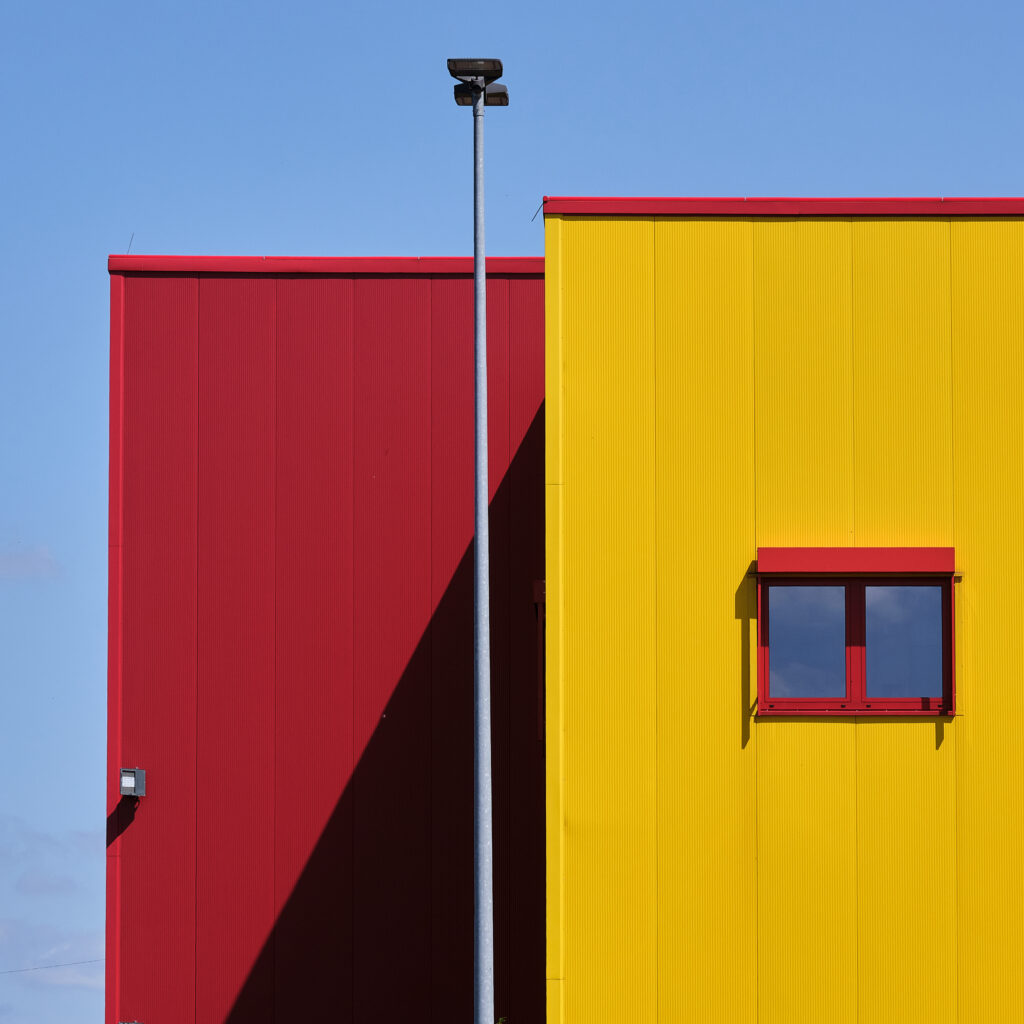Stripping away all clutter and the superfluous, the Roaming Photographer ignores all grayness around him, and follows Frank Stella’s dictum. “What You See is What You See.”Such simple purity, removing all emotion and only being engaged with geometric shapes, could lead him to bland neutrality in Germany’s Ruhr Valley. It is a region cluttered with dismantled factories, chockablock buildings, and relics from Zollverein coal mines–hardly fertile ground to imaginatively picture “less is more.” In search of a spirited zeitgeist the way “a gorilla looks for nuts,” retired photojournalist Klaus Micke subscribes to minimalism’s ruling “flow of repeated lines”–with a creative twist.

Transcending the “less” and craving “more” (“it’s a pressure, I must photograph”), he subtly invigorates geometric orderliness with contrasts, textures and “objects” that the New York Times said “seem out of place” (like his Lantern and Colorful Wall) Admittedly “meditating” when picturing these connections of shapes and expansive lines, Micke poignantly captures human “loneliness” with a solitary Red Door. He’s less restrained in his amusing Shark Fin (where gray square windows compete with blue rectangles for preeminence). Again playing with our preconceived notions of minimalism in Red, Grey and Blue, he becomes “complicated,” even witty, by intriguingly placing a pink alarm system.

“I like playing with lines, contrasts, people see a face in Red Windows, that’s for you to judge,” says Micke, drily, who as a Westdeutsche Allgemeine Zeitung photographer rushed to crime, fire and disaster scenes for 35 years. Now tableaus inspired by Eric Clapton distinguish his work. “I like staircases, the mystery of where they are going, you just don’t know if they will lead to heaven,” explains Micke, pointing to a work entitled Red, White and Blue. “I play the guitar (and other instruments), and Clapton is great…I have several photos with staircases and the contrasts they create…the productive way light works. Yellow, Red and Shadows (a Fujifilm X-Pro3 photo replete with the optimism of ascending), is one of my favorites.”

Scanning through his seemingly-endless stream of images, “Micke admits, “It’s not easy finding places to photograph in this industrial region. There are just too many white buildings. When I discover a colorful facade or differently-colored containers (Yellow, Blue, Green and Red units perched atop a bluish grey container) I am very lucky.” So are we. Yellow Windows is simplicity transformed into vivid storytelling. One one blue window is open, defiant amidst a wall of closed yellow-shaded windows. It demands exploration, a peek inside, where a world of intriguing possibilities await us.
Written By Edward Kiersh






